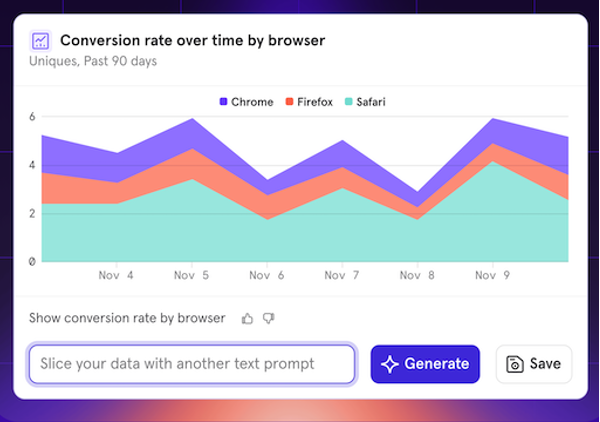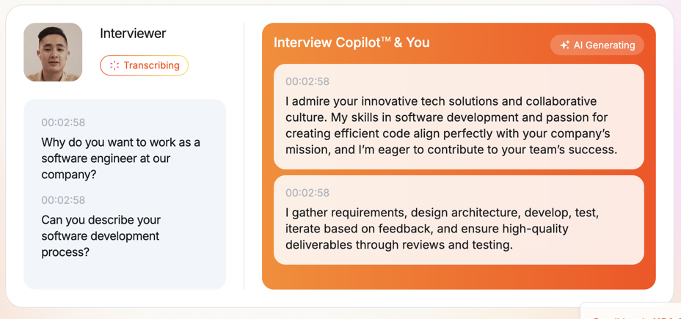Summary:
When using AI consider its four “superpowers”: content creation, summarization, basic data analysis, and perspective taking.
At Pendo’s Pendomonium conference recently, I asked my audience who had AI features on their product’s roadmap. Almost every hand in the room went up. But, based on my experience, I’m guessing many of those AI-powered features are destined to be useless.
Start from the Problem, Not the Technology
Amidst the AI hype, teams fall into a familiar trap of creating solutions in search of a problem. No one needs a half-baked chatbot that clumsily answers questions better suited for an FAQ. Users want solutions that effectively address user needs, regardless of the technology behind them.
Building effective solutions starts with choosing the right tool for the job. Generative AI (genAI) is a powerful tool, but it’s not the only one.
I’ve advised dozens of product teams on their AI strategy. But even thinking about AI, product teams should have:
- A research-backed understanding of the existing customer problem
- A clear definition of desired outcomes and user behaviors
(I’ve done this so often, I created a framework to map these connections out — the user outcome connection.)
Only when the team is aligned on its goals, is it ready to decide if AI is the right option. The key question for the team to ask is:
“Will generative AI make the user more likely to engage in the specific behavior that leads to the desired outcome and creates a positive impact for the business?”
Over the last year, I have been in many conversations where asking this question makes teams realize that genAI isn’t what they need. For example, one team was in the middle of developing a chatbot to collect insights from users when a simple survey would have been much more effective at accomplishing that goal.
Is GenAI the Right Solution? The Superpowers of AI
There is no one-size-fits-all answer to this question, especially since this technology is so new and rapidly evolving. These are tasks where genAI technology often excels and delivers value. I call them the superpowers of AI.
Currently available LLMs are particularly good at:
- Creating content
- Summarizing text
- Basic data analysis
- Perspective taking
Using genAI for such tasks is beneficial whether AI takes the shape of a chatbot or of a feature embedded in a product.
Content Creation
Many apps that incorporate AI-enhanced features begin with content creation or manipulation, because it’s such a natural fit for a large language model (LLM). If your product involves creating or modifying content, there’s a strong chance that genAI can deliver a significant boost in value for your users.
Example: Bumble
Dating companies like Bumble want to help their users make meaningful connections with others. But many people struggle to start up new conversations once they’ve matched with someone. To address this pain point, Bumble created Icebreaker — a feature to autogenerate an introduction message.

Summarization
In addition to producing content, generative AI can ingest vast amounts of content and summarize key points. Tech giants have led the way, launching tools to condense complex information into digestible snippets. Companies of all sizes are following suit, leveraging multimodal AI models to provide summaries of everything from documents to videos. AI can make large amounts of information easily consumable to users.
However, it’s important to remember that hallucinations can occur in these summaries, especially when large amounts of text are summarized.
Example: Gmail
Clicking on Gmail’s Summarize this email button opens a chat panel that instantly starts summarization, while allowing the user to follow up with questions. It takes entire conversations and distills them into the most important points.

Basic Data Analysis
Most people find statistical calculations intimidating. Generative AI can guide users to the appropriate statistical method or even perform the calculations for them. While these tools are not yet flawless, they represent a powerful way to foster more confident, data-driven thinking among users.
Example: Mixpanel
Some of the first adopters of genAI were product-and-marketing-analytics software. These often contain data-heavy functionalities that their users struggle with. One such software, Mixpanel, has a feature (Spark AI) that allows users to ask questions in natural language. In response, the system produces graphics that users can further interrogate.

Perspective Taking
Trained on vast amounts of human-generated content, generative AI has shown an unexpected superpower: the ability to simulate diverse perspectives. These systems can adopt the mindset of another person, offering insights into their potential thoughts or actions. They can also assist with scenario planning, drawing from patterns documented in similar situations. Though not yet fully taken advantage of, perspective taking has significant potential.
One of my favorite examples of perspective taking is Final Round AI. Instead of providing templated job-interview preparation, this interview-assistant system considers both the applicant’s materials and the specifics of the job they’re applying for. By taking the hiring manager’s perspective, the interview assistant can deliver realistic interview practices to applicants.

Appropriate use of AI
These four examples illustrate some of the most exciting superpowers of generative AI. There are many other examples, including:
- Information retrieval: Researching through large amounts of data to identify an insight or pattern
- Image generation: The creation of an image (or a prompt to generate an image) from a set of instructions
- Pattern recognition: The ability to identify a pattern within a dataset and use it to categorize other data
- Emotional support: Understanding users’ emotional states and offering companionship and support.
This list is far from exhaustive, and the landscape is changing swiftly. Keep an eye on how your competitors leverage genAI. And then, whatever list of superpowers you may have come up with, ask yourself whether any of them is the right solution for your problem.
Effectively applying AI begins with understanding that it is just another tool (albeit a very powerful one) in your toolbox. You must start by properly defining what you are building before deciding to use AI. Once you know the specific user behaviors and outcomes you aim for, you can determine if AI can augment the experience. This approach ensures that your team applies this transformative technology only in scenarios where it adds genuine value.
As you approach the use of AI in your product, don’t race to adopt a new technology for its own sake. Instead, you should aim to craft solutions that help users achieve their goals effectively and efficiently. The most innovative products of the future will not just be powered by AI, they will be designed with a deep understanding of human needs, with AI as one part of the equation. By combining clear intention, thoughtful design, and the right application of AI’s strengths, your team can create experiences that are not only functional but also transformative. That is the true promise of AI, and it is up to us as product creators to realize it responsibly and creatively.
